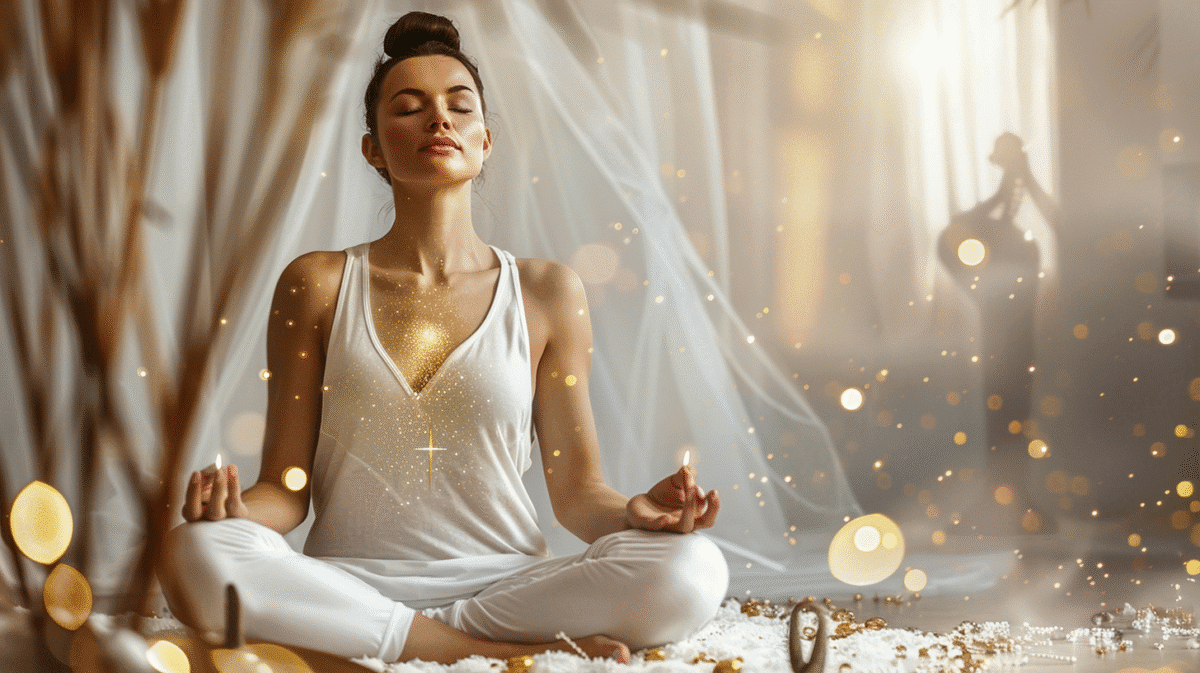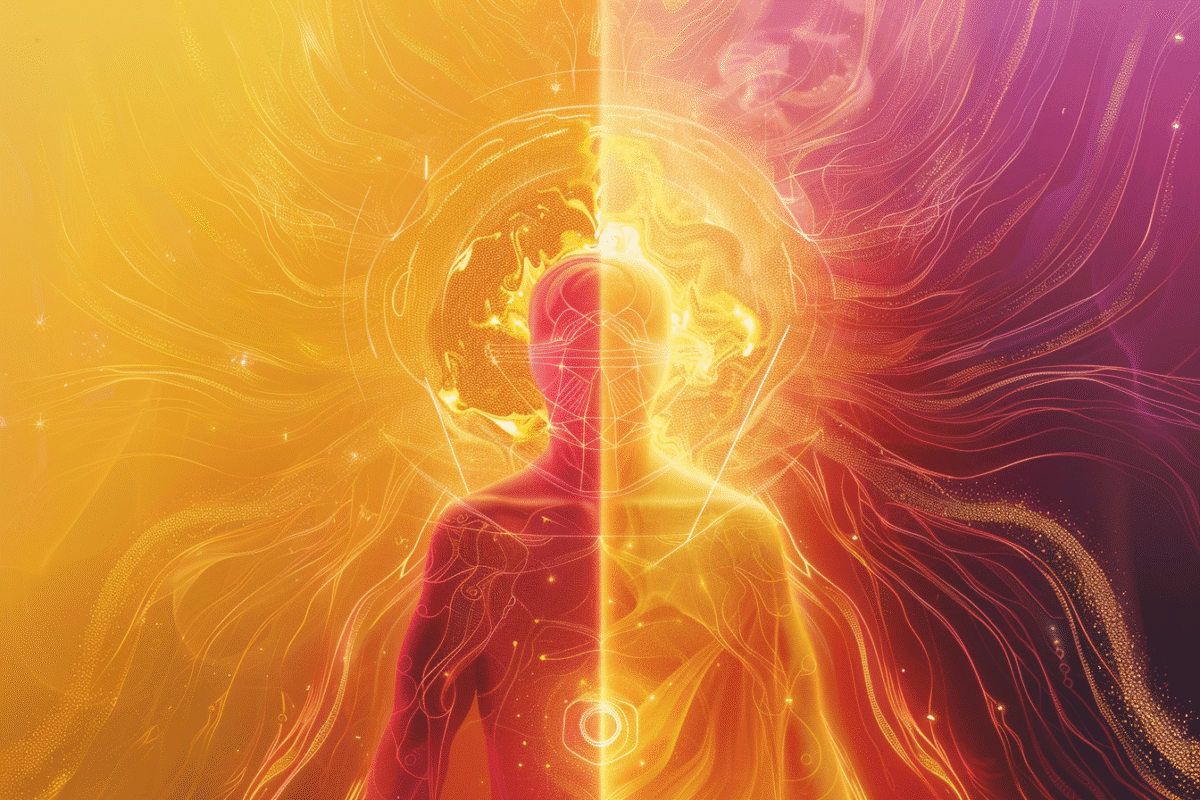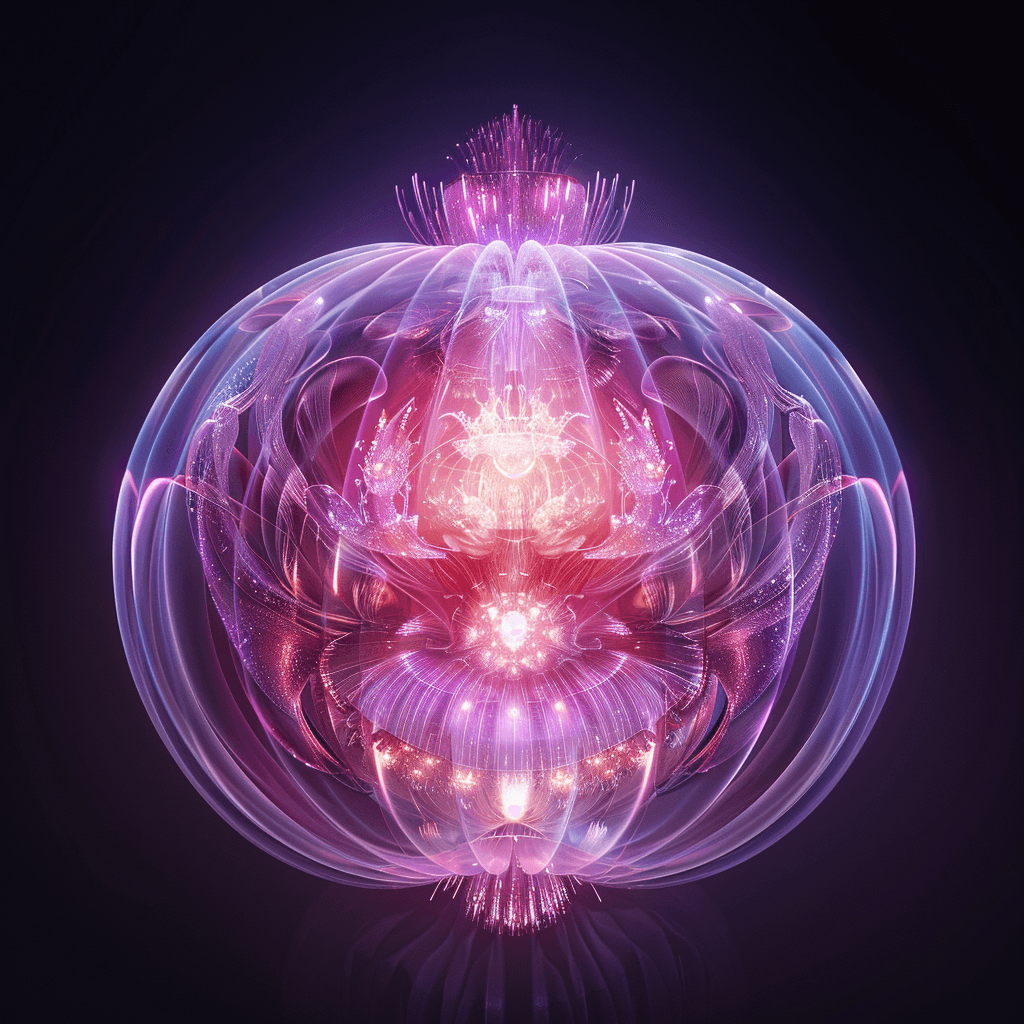
Chakras and Rainbows: A Sacred Quest to Restore Your Vibrant Energy
May 17, 2025
It's 6 pm again. You just came home from a long and exhausting (work) day as usual. You know you should be doing some chores, catch up with friends and also do something fun or productive. But before you can even start, the day is gone and a new one begins. You just feel so drained... You feel like you don't have enough juice at the moment. What is this juice anyways and how can we fill it up again?
The Universal Life Force: Many Names, One Energy
In Yoga there is this term called Prana, a sanskrit word that can translate to “life force” or “breathing forth.” It’s the energy that permeates the universe at all levels. The principle of energy responsible for the body’s life, heat and maintenance. It’s the vital force that flows through our subtle energy body and powers our physical body. It’s the purusha, the cosmic being or universal principle who was sacrificed by the gods to create all life. It’s our breath. It’s our life energy. And as you surely know, in latin breath means spiritus. I’ll leave it at that 😏
Prana is not just a concept unique to yoga philosophy. It’s found in many different cultures and traditions, each with its own interpretation:
- In Chinese medicine, it’s known as Qi, the vital energy that flows through the body along meridians
- In Japanese traditions, the same force is called Ki
- In the ancient Hawaiian Huna tradition, it’s known as Mana
- If you know the anime One Piece 🏴☠️, it’s referred to as Haki, a mysterious power that is possessed by all living beings, quite difficult to master and basically gives you super powers
Being balanced and recognizing/utilizing the flow of the universe (Dao) ☯ gives the characters in Hell’s Paradise also immortality. While we might not be aiming for immortality, we definitely want high energy levels and vibrant health!

When our energy becomes depleted or blocked, we feel it physically, mentally, and emotionally. This is where bridging Eastern wisdom with Western lifestyles becomes so powerful. Traditional Chinese Medicine developed elegant methods like Moxibustion to activate and direct Qi energy at specific points, while Yoga offers us Pranayama practices to consciously work with breath and life force.
These aren’t separate or competing approaches – they’re complementary pathways to the same destination: vibrant energy and wellbeing. The Paradise Bridge concept is about integrating these powerful traditions in ways that modern, busy people can actually use in daily life.
What is the Pranic Body?
Let’s look at the Pranic body now. Imagine an onion. When you first look at it, you see its outer layer, the skin. This is like the Annamaya Kosha, the physical body that we can see and touch. It’s the layer that interacts with the world through the five senses. It’s the part of us that needs food, rest, and exercise. Koshas are the layers that which cover the true Self and each covers a different aspect of our being. Going all the way to our innermost self, which is all about joy and peace. So we are talking here about the whole you ❤️
Now peel back the skin of the onion, and you’ll find the next layer. This is like the Pranamaya Kosha, the energy body. It’s not something we can see with our eyes, but we can feel it. This layer is all about our life force or energy, known as Prana. It’s the part of us that breathes and circulates energy throughout our body. As this blog post is about Prana, we’ll take a look at it in more detail below. The practices of Pranayama work mainly with this Kosha.
Peel back another layer of the onion, and you’ll find the Manomaya Kosha, the mental body. This layer is all about our thoughts and emotions. It’s the part of us that processes our experiences and reactions.
Go even deeper, peel back another layer, and you’ll find the Vijnanamaya Kosha, the wisdom body. This layer is about our deeper understanding and intuition. It’s the part of us that makes sense of the world and our place in it.
Finally, at the very core of the onion, you’ll find the Anandamaya Kosha, the bliss body. This is the deepest, most inner layer of our being. It’s the part of us that experiences joy, peace, and a sense of connection with all things.
Just like an onion, each layer of our being is connected to the others. They all work together to make us who we are. And just like peeling an onion, exploring these layers can lead to tears (of frustration or joy), but also to a deeper understanding of ourselves.

The Five Energy Movements: Understanding Vayus and Meridians
Before we delve into the types of Prana, let’s briefly touch on Vayus. In ancient Hindi it means wind, kinda related to the air we breath. So these words are sometimes used similar. Vayu in Hinduism is the deity of life, god of the wind and a divine messenger. And also born from the breath of purusha. His first avatar is the god that looks like a monkey Hanuman 🐵.
There are 10 types of Vayus, let’s ignore the 5 minor ones like burping, blinking or sneezing for now and concentrate on the 5 major ones:
- Prana Vayu – inward moving: That is the fundamental Vayu that governs the intake of substances and energy. Located in the chest and head, it is responsible for our ability to breathe in air, consume food and drink, and experience sensory perceptions. It’s all about intake, inspiration, propulsion, forward momentum, aspiration, pursuit, and desire.
- Apana Vayu – descending: This Vayu is located in the pelvic floor and lower abdomen. It governs the downward and outward flow of energy, including the excretion of waste from the body and the expulsion of carbon dioxide from the lungs. It’s all about elimination and downward movement.
- Samana Vayu – equalising: Situated in the abdomen, Samana Vayu is responsible for the digestion and assimilation of all substances and experiences. It governs the processing and assimilation of food, as well as the processing of sensory experiences and emotions. It’s all about assimilation, discernment, inner absorption, and consolidation.
- Vyana Vayu – diffusive: This is the expansive Vayu that permeates the entire body and integrates the other four. It governs circulation, expansiveness, and pervasiveness. It’s responsible for the circulation of blood and nutrients throughout the body, as well as the movement of thoughts and emotions through the mind.
- Udana Vayu – ascending: This one is located in the throat and head. It governs growth, upward movement, enthusiasm, speech, expression, and strength. It is responsible for the upward movement of energy, including the ability to stand, speak, and grow.
Interestingly, these energy movements have close parallels in Chinese Medicine. The ascending and descending movements of Qi (similar to Udana and Apana Vayus) are considered crucial for health, while the Stomach meridian’s descending function closely resembles Samana Vayu’s digestive role. This is why techniques like Moxibustion applied to specific meridian points can have such profound effects on our overall energy system.
Practical Energy Experiences: Feel It For Yourself
Cool, now we know all that. How can I feel it? Just because your heart isn’t beating doesn’t mean it stopped. You just didn’t tune into it. And it’s the same with Prana.
🪩 Example 1: Kamehameha – your Energy ball
Imagine a ball of energy near your lower belly, about five cm below your navel. This is your body’s energy center. Visualize this energy as a bright, glowing ball of light. If you don’t feel it, pretend!!
Slowly, start to move this energy ball up your body, from your belly to your chest, then to your throat, and finally to your head. Feel the energy flowing through your body, like a gentle stream.
Next, bring your hands in front of your belly, palms facing each other but not touching. Imagine that you’re holding the energy ball between your hands. Just like Goku 🐉 preparing his Kamehameha (here they call the energy Ki), feel the energy pulsating between your palms.
Move your hands together and apart, like you’re shaping the energy ball. Can you feel a gentle resistance, a warmth, or a tingling sensation? That’s your Prana Energy Ball!
Harness this energy. You can push it outwards, sending positive energy into the universe, or you can bring it back into your body, nourishing yourself with your own life force.
Moxibustion Connection: In Traditional Chinese Medicine, this lower belly area houses the “Dan Tian” – a crucial energy center where Qi is stored. Moxibustion treatments often target points around this area to strengthen foundational energy. The warmth from moxa stimulates the same energy you’re visualizing in this exercise!
🙌 Example 2: Moving your arms
Stand comfortably with your feet hip-width apart. Let your arms hang naturally by your sides. Close your eyes and take a few deep breaths to center yourself.
As you inhale, slowly lift your arms up towards the sky. As you do this, visualize the Prana, the uplifting energy, flowing through your body. Feel it moving your arms, guiding them upwards.
Notice the point where your arms seem to move upwards by themselves, as if being pulled by an invisible force. That’s the Prana at work!
As you exhale, slowly lower your arms back down. As you do this, visualize the Apana, the grounding energy, flowing through your body. Feel it pulling your arms down, grounding you.
When your arms are fully lowered, turn your palms to face the ground. Feel the Apana energy pulling you down, grounding you further.
Repeat this process several times. Each time you lift your arms, visualize the Prana energy. Each time you lower your arms, visualize the Apana energy. Feel the energies moving your arms, guiding your movements.
Remember, yoga is all about connecting with your body and your energy. So, take your time, be patient with yourself, and most importantly, enjoy the process of becoming a super hero.

How Eastern Practices Restore Your Energy
When we feel depleted, specific practices can help replenish and rebalance our energy:
- Targeted Moxibustion stimulates precise points in the body’s meridian system, enhancing Qi flow and removing stagnation
- Pranayama breathing techniques directly increase your Prana absorption and distribution
- Gentle movement practices like Tai Chi and specific Yoga sequences harmonize the Vayus
These approaches work together to address energy depletion on multiple levels, from the physical to the subtle. The beauty of these time-tested methods is that they don’t require hours of practice – even 5-10 minutes can make a noticeable difference in how you feel.


